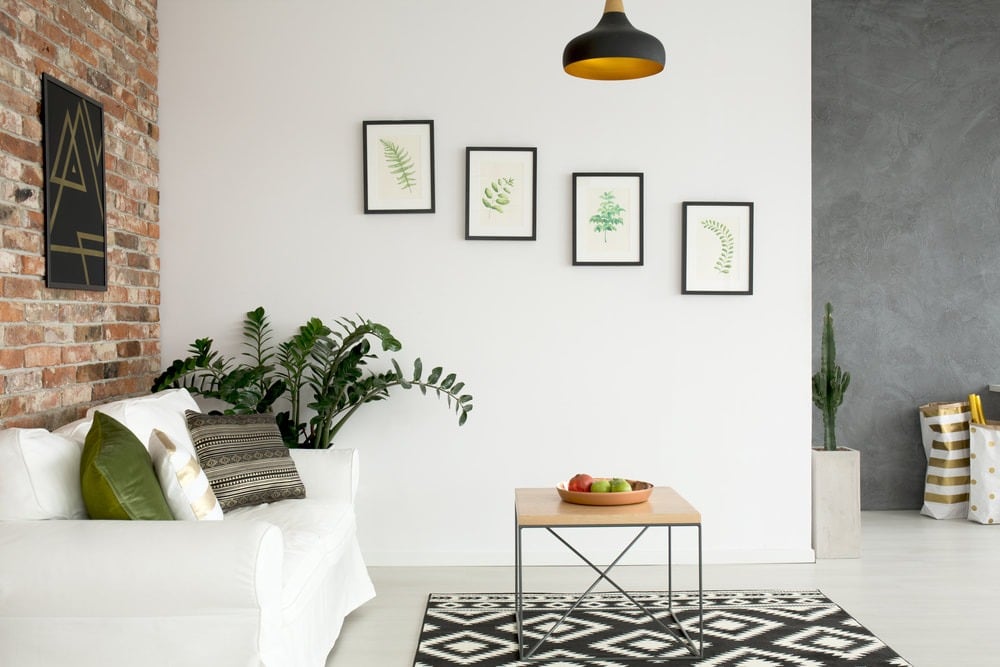Using modern trends is one of the best ways to get a property flipped and on the market. Whether you use color or over-sized baseboards, walls are an easy and highly visible platform for trendy renovations. But if you want to keep a relatively neutral color palette, a good compromise is an accent wall. The best material for warming up a room and adding a pop is with brick veneer. Figure out the best placement for the feature with these four questions:
1. What other changes are you making to the room?
A brick veneer wall isn’t cost-prohibitive or too technical for a weekend DIY project. That means you can either do it to add a dramatic statement in a room you think is a bit drab or you can incorporate it into a whole host of renovation projects you’re making to the space. If it’s the only change you’re making, all you need to do is check the coloring and style against the room’s current color palette. Pay particular attention to any window, cabinet, and door hardware in the room. While brick goes well with anything, some shades don’t match certain metal patinas. If you’re renovating the whole room, you have a bit more of a visual challenge, but you have more options, too. Decide what the primary basis for your new coloring scheme is going to be — whether it’s the veneer wall, the flooring, or the other wall colors, and make the others match accordingly.
2. Is there enough light?
Brick really warms up a room, but it can make it look a little dim or crowded if you don’t find a great place for it. Brick veneer walls work best in a few different spots. If you’re working with an interior space, choose the smallest wall of the room. These won’t shrink down the room and it lets the other three walls lighten up the room. It’s also a great backdrop for lighter-colored furniture and even better if it’s broken up by a suspended television. If you’re renovating an exterior room, choose the wall with windows or a glass door. The natural light brightens up the feature while letting the brick keep the cozy look you wanted in the first place.
3. What does the fireplace look like?
Depending on the style of the house, the fireplace may already be set with brick or a brick veneer. If you’re adding an accent wall in the same room as it, make sure both bricks match (even if it’s not precisely the same) and that the two brick features don’t overwhelm the room. If you have an open floor plan or you can see both the wall and the fireplace at the same time, making them work well together is essential; adding a brick veneer wall to a bedroom or upstairs space gives you much more room to pick another shade and style. And you don’t have to let your fireplace have the final say. If you like a certain shade of brick veneer more than you like your current fireplace, redo both based on the best choice for the color palette.
4. Do you want antique, reclaimed, or new?
Finding the right brick veneer for your walls is about more than finding the right coloring and gradient. It’s also about the full statement you want to make with your wall. Adding antique brick veneer gives your home extra history, especially if you are in New England or near historical metroplexes across the Midwest. Using antique brick also helps tie the exterior and interior of your building together if you bought a property in an older neighborhood. Reclaimed brick has the same weathered, lived-in tones, and it’s good for the environment. Instead of using newly constructed materials, choosing reclaimed brick veneer means you’re saving bricks from being demolished and sent to landfills; it also means there’s no environmental cost through the construction of new materials.
Adding a brick veneer wall to your investment property is a great way to add new style to the walls and transform the space for quicker sales. For more tips or help financing your next project, contact us.

